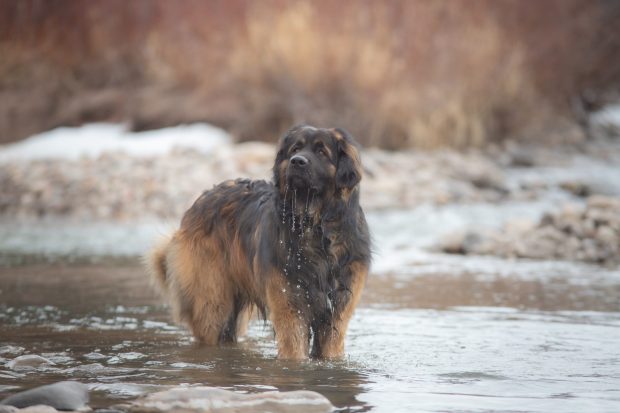
As “fluffly” as a Leonberger may appear to some, the breed actually has a water resistant coat as required by the AKC breed standard (Coat: Leonbergers have a medium to long, water resistant, double coat on the body and short fine hair on the muzzle and front of limbs).
This coat texture is a legacy from its Newfoundland ancestor. When Heinrich Essig created a dog to resemble the lion in his town’s coat of arms, he “recruited” a few breeds to be part of his breeding program, and a Landseer Newfoundland (crossed with a short-haired Saint Bernard and a later addition of Great Pyrenee) was part of the recipe.
It would seem that Leos got more than coat from their Newfie relatives: The Leonberger isn’t just a working breed, it has water work in its DNA. Wisely, the Leonberger Club of America awards Water Rescue titles for Water Dog (WD), Water Rescue Dog (WRD) and Water Rescue Dog Excellent (WRDX) as part of their Water Work Program, and it started in 1997 when the Leonberger folks sought – and received – permission from the Newfoundland Club of America (NCA) to utilize the NCA official water test requirements. That same year, a formal Leonberger Club of America Water Work Program was adopted.

Photo by Stephanie Lucero/Unsplash photos
As the club, itself, writes, “The Leonberger is a delight to watch when it comes to water. Whether the water is in a small container, in a cattle trough or in the wider open spaces of lakes and oceans, they simply revel in the stuff. They are particularly strong swimmers and with their webbed feet are well suited to water rescue work.”
Our Northern neighbors agreed. The Leonberger first appeared in Canada in the early 1900s when they were imported by the government to perform as water rescue dogs.
Top close up image of a Leonberger by Angela Buser-iStock Photo
